A small children’s room is not a reason to despair. If you organize the space correctly, everything your child needs can fit in it. Our advice on decorating a small children’s room will help you visually expand the space, as well as choose the right finishes, furniture, and decor.
Choosing a style for a small room
Of all the styles in design, those that are predominantly light shades are suitable for decorating a small children’s room. These include modern, nautical, classic, Scandinavian, Provence, and loft.
A children’s room in a modern style
The strict simplicity of modernism is diluted with bright colors in the children’s version, but retains the correctness of the lines. The restrained interior without much decoration creates an impression of cleanliness and order, encouraging neatness.
The finish of a small children’s room in a modern style is predominantly monochrome, with occasional subtle geometric prints. Such a style is more suitable for boys and girls aged 10 and above.


Nautical-style children’s room
Does your child dream of travel, distant islands, and sunken treasures? The nautical style will help you bring those dreams to life.
This style is characterized by a combination of white, blue, and red colors (solid and striped), with the noble texture of wood. In the interior of a small children’s room in the nautical style, there should be attributes such as a steering wheel, anchors, fishing nets. Drawings and decor in the form of shells, fish, starfish, as well as an aquarium made of acrylic glass, wall clocks-compasses, inflatable lifebuoys, models of sailing ships and yachts will also be appropriate.
For curtains, it is better to use semi-transparent matte tulle resembling sails, but rough burlap, linen, or cotton fabric in blue and white will also work. Curtain tiebacks can be made from ropes, tying them with beautiful nautical knots.

Classic-style children’s room
With soft cream tones, luxurious wavy draperies, the shimmer of gold and silver, elegant ornaments, and carved furniture, every child will feel like they’re in a fairytale in such an environment.
For a little girl’s bedroom, it’s best to decorate in airy or pastel tones, while for a boy, use more polished wood, elements of blue, gray, and beige.
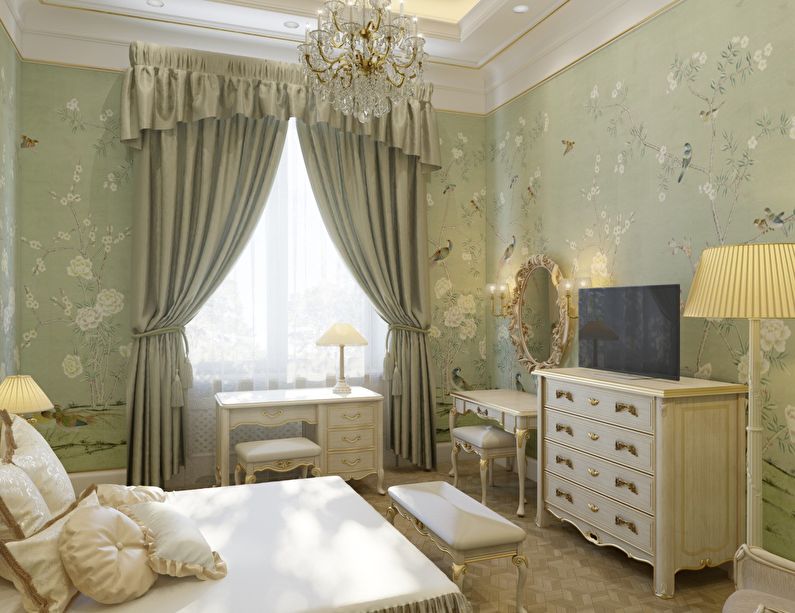
Children who love winter will surely appreciate the clean and cool Nordic interior.
The main feature of Scandinavian style is an abundance of light, which is especially important for small children’s rooms. Everything in this style is reminiscent of the northern nature: parquet and furniture made of bleached wood, shades of snowy mountains and icy rivers, spider-web chandeliers or snow globes. Windows are mostly kept open, letting in the sun, and at night can be covered with light roller blinds.


Provence-style children’s room
French Provence is all about pastel tenderness, small floral patterns, chintz fabrics, lace, frills, and thin flowing lines. This romantic style is more suitable for girls of all ages – from infants to high schoolers.
The unobtrusive lightness of Provence will create a beautiful calm atmosphere in a small children’s room, where it’s nice to play, learn, and relax.


Loft-style children’s room
This style features industrial elements such as unfinished walls (imitating brick or stone masonry, concrete slabs), exposed ceiling beams, light fixtures made of metal on brackets or simple pendant chandeliers, urban-themed wallpapers, and minimalistic furniture. All of this gives the room a free and slightly careless look.
A small children’s room in the loft style can be a good option for an active boy. In an environment where everything looks reliable and unbreakable, you can play ball, climb on sports walls and hanging ladders, swing on rings, and train on a pull-up bar.

Colors for a small children’s room
Decorating a small children’s room requires moderation in choosing colors. Of course, you want to surround your little one with bright things, but it’s better if those are toys. Wallpaper, furniture, floor or ceiling coverings will look much more harmonious in a restrained and neutral palette.
White children’s room
Snow-white color and its light shades will visually expand even the tiniest children’s room, making it brighter and cozier. Moreover, a light background perfectly combines with both pastel and saturated elements.


Beige children’s room
Decorating a small children’s room in beige tones is perfect for children of any gender. Beige can be complemented with details of green, pink, and also blue colors, natural wood products, gold or silver inserts.

Yellow children’s room
Designing a room in warm, sunny tones is a universal option. Yellow color uplifts the mood, gives energy, and stimulates mental activity. In such a room, a child will become friendly and cheerful.
Any shades of yellow can be mixed with equally saturated green, blue, purple, gray, white, or pink colors. Orange and red colors are only allowed in small details, otherwise, they will attract all the attention.
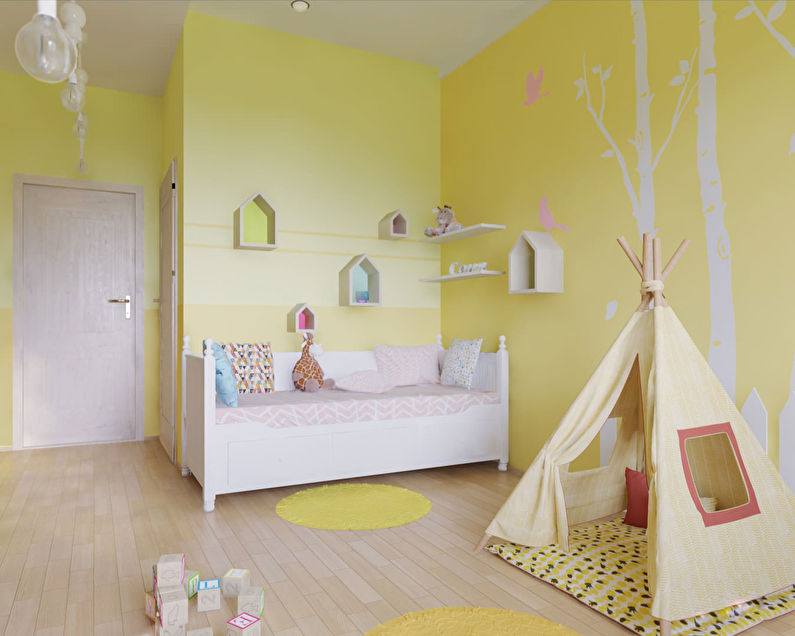
Green children’s room
The color of grass and spring leaves is the easiest to perceive. It is ideal for decorating a small children’s room in natural tones and looks great next to wood.
Green can easily be mixed with white, gray, orange, yellow, brown, turquoise, purple, or pink. It is a color of peace and safety, giving rest to the eyes.

Pink children’s room
Traditionally associated with little princesses, pink color creates a calm atmosphere. Such a gentle, doll-like children’s room will be liked by every girl. Dreamy pink can be combined with all pastel shades, as well as mint and chocolate.


Blue children’s room
Blue color is equally suitable for both boys and girls. The interior of a small children’s room, executed in blue tones with white additions, looks the best, but beige, pink, and yellow shades are also appropriate.

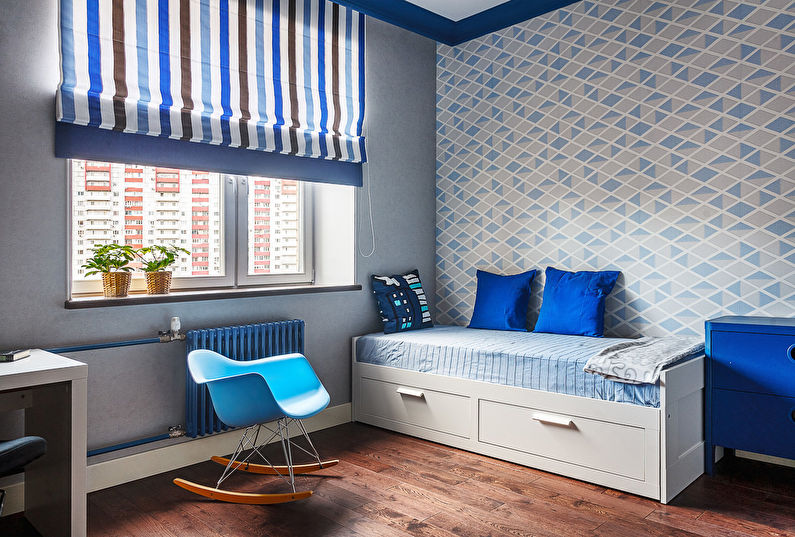
Materials and finishes for a small children’s room
Materials for any children’s room should be chosen with special care. First of all, they should be environmentally safe, not emit harmful substances or synthetic odors, and secondly, be resistant to mechanical damage. In addition, an aesthetic appearance and affordable price are equally important.
Floor
A warm floor is highly desirable in a small children’s room. Wooden parquet, quality laminate, or cork wood are suitable coverings. For toddlers who are just learning to walk, a soft carpet or carpet tiles are irreplaceable.
Linoleum and trendy poured options should be avoided – they are solid plastic, and also very slippery. In general, too smooth hard floors should not be used in such rooms: one careless movement can lead to injury, and children love to jump, run, dance, and fool around all the time.
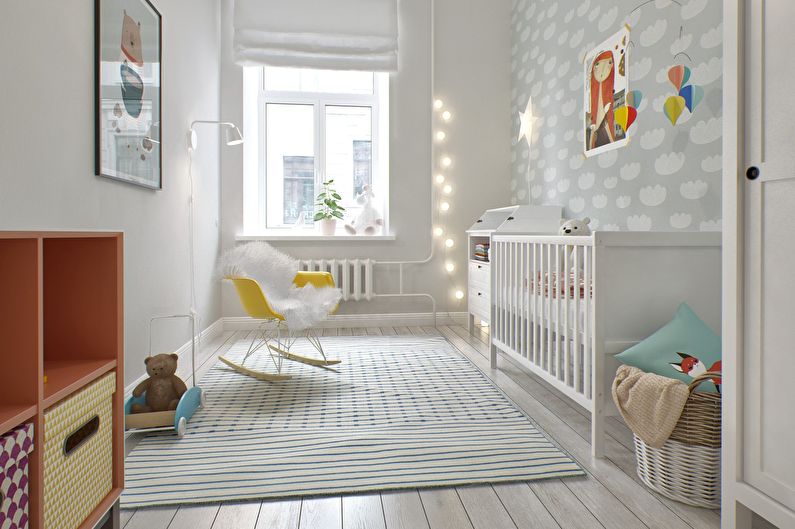
Walls
To make a small room seem more spacious, the walls should be light and unobtrusive. This can be achieved through painting, wallpapering, or decorative plastering. Small, delicate patterns, thin stripes, perspective or 3D-effect wallpapers are acceptable.
It makes sense to leave one of the walls or part of it for children’s creativity. A chalk surface (board or special paint) is perfect for drawing. You can also buy paper coloring wallpapers that will provide the little one with an interesting pastime for a long time.

Ceiling
A light whitewash is optimal for finishing the ceiling in a small children’s room. To forget about cracks and crumbling plaster for 20-30 years, paint can be applied on top of painter’s glass fabric.
If volume is needed, a two-level plasterboard construction fits perfectly here. A glossy stretch ceiling and upward-directed lighting can visually make the room higher.


Textiles
Fabrics used in a child’s room should be hypoallergenic and collect as little dust as possible. Thin tulle, linen, or cotton are suitable for curtains. Bamboo blinds and Roman shades can also be used.
When choosing bedding, it is preferable to opt for harmonious, non-bright colors that blend well with the interior. Textiles that come into contact with the skin must comply with sanitary standards, not have a chemical odor, and not shed. It should be composed entirely of natural fibers.

Furniture, Appliances, and Accessories Arrangement
To make it easy for your child to play and do activities, it’s important to arrange furniture properly, provide shelves, drawers, and closets to store clothes, toys, or books. If each item has its own place, it will teach the child to be organized.
Small Square Children’s Room
In a square room, you can place the bed against one wall, the closet against another, and the desk next to the window. The remaining space can easily be filled with a Swedish wall, sports rings, or some additional shelves.

Narrow Small Children’s Room
To balance a rectangular children’s room, you need to place wide cross elements (a single or bunk bed, a low bookshelf with shelves, dressers) along the narrow walls, and tall slender cabinets next to the long walls.
If the window is located on the short wall, it should be covered by a single curtain with pronounced cross-folds, and in the opposite case, floor-to-ceiling vertical curtains will be useful.


Small Children’s Room with Non-Standard Shape
If the children’s room has a non-standard layout, then there is a wide space for imagination. For example, you can order unusual furniture with angled corners, create an interesting niche for the bed from drywall or wood, hang a hammock, and instead of regular chairs, place low ottomans or bean bag chairs.

Proper Lighting in a Children’s Room
A room where a child spends a lot of time must be well-lit. This not only affects the overall atmosphere, making the room cozy and welcoming, but also affects vision.
LED bulbs that emit soft, diffused light in the white and yellow spectrum are the best choice. Incandescent bulbs are the second safest option; researchers find their light to be the most similar to sunlight. Avoid bright neon colors as they can irritate the eyes, and don’t use daylight fluorescent lamps at home, especially in a child’s room.
For light fixtures in a small children’s room, choose spotlights and distribute them evenly across the ceiling. Consider hanging a small chandelier in the center, perhaps shaped like a ball, bell, or butterfly. A compact sconce near the bed will come in handy, and a desk lamp or directed pendant light would be perfect for a workspace.

Small Children’s Rooms – Photos
Our gallery can help you view ready-made design options for small children’s rooms and inspire you with new ideas. It contains photos of rooms for both boys and girls, as well as by size.












Design for a small boy’s bedroom



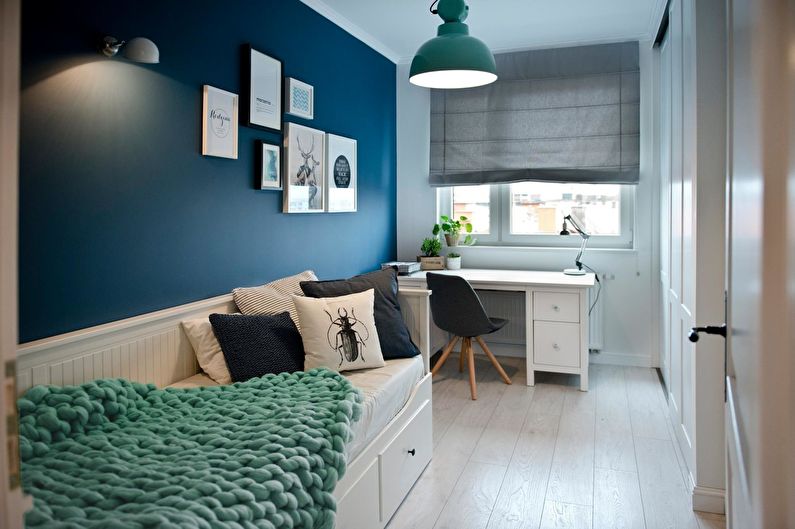

Design for a small girl’s bedroom
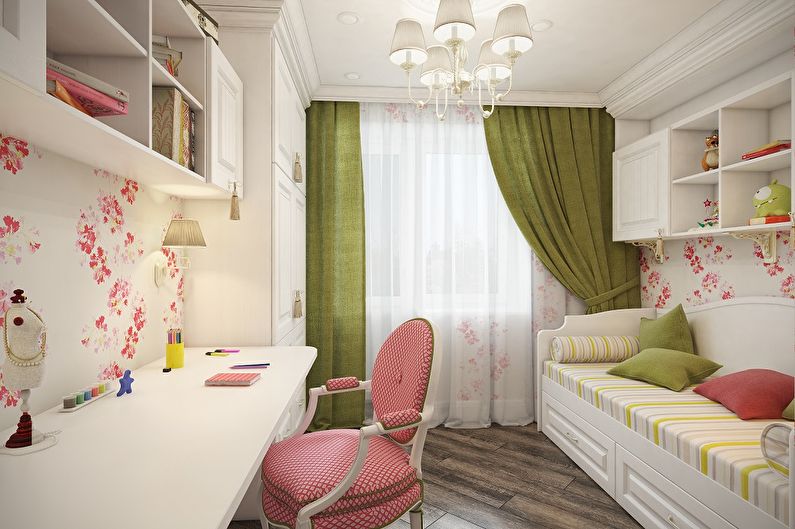










Leave feedback about this